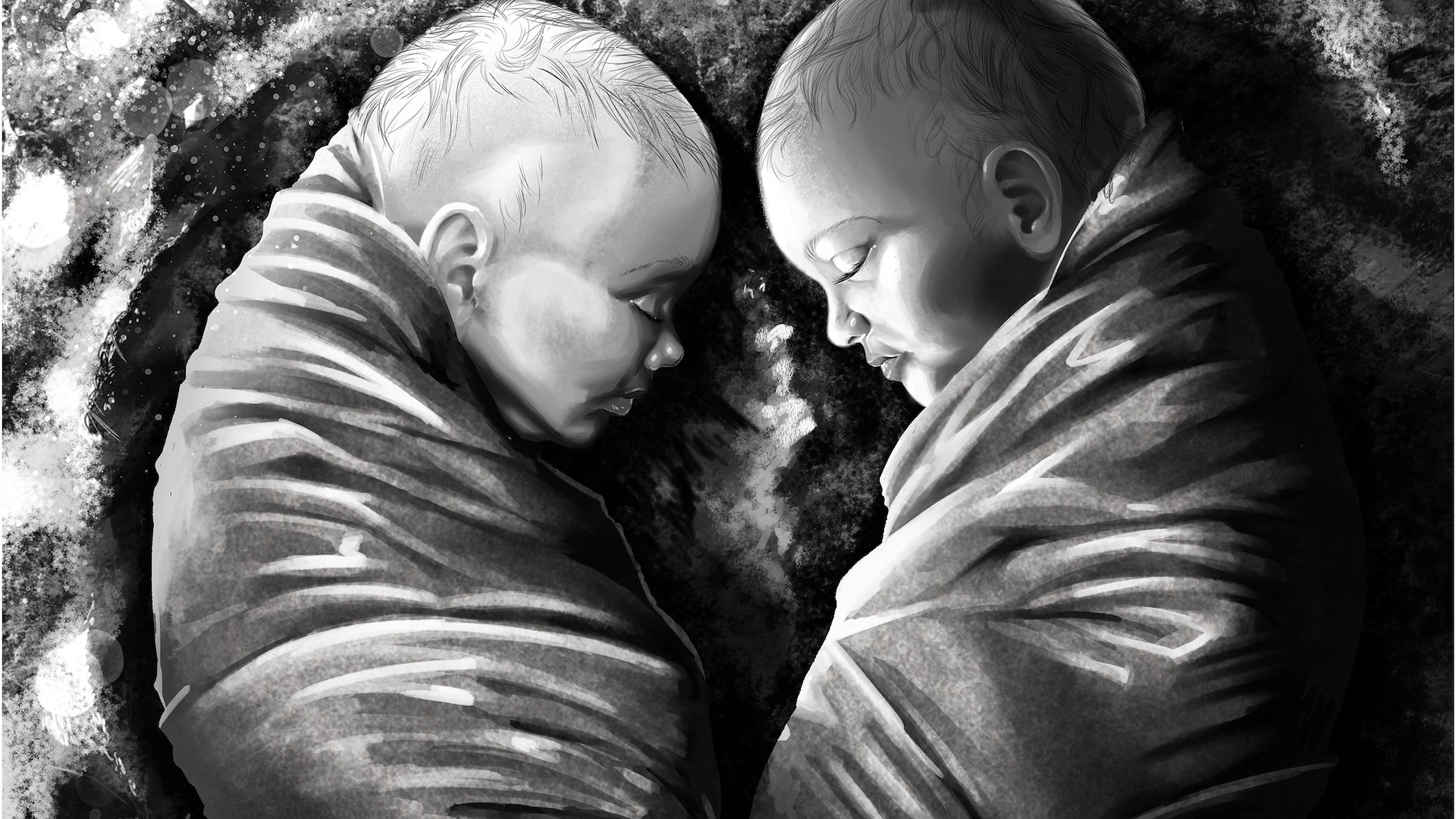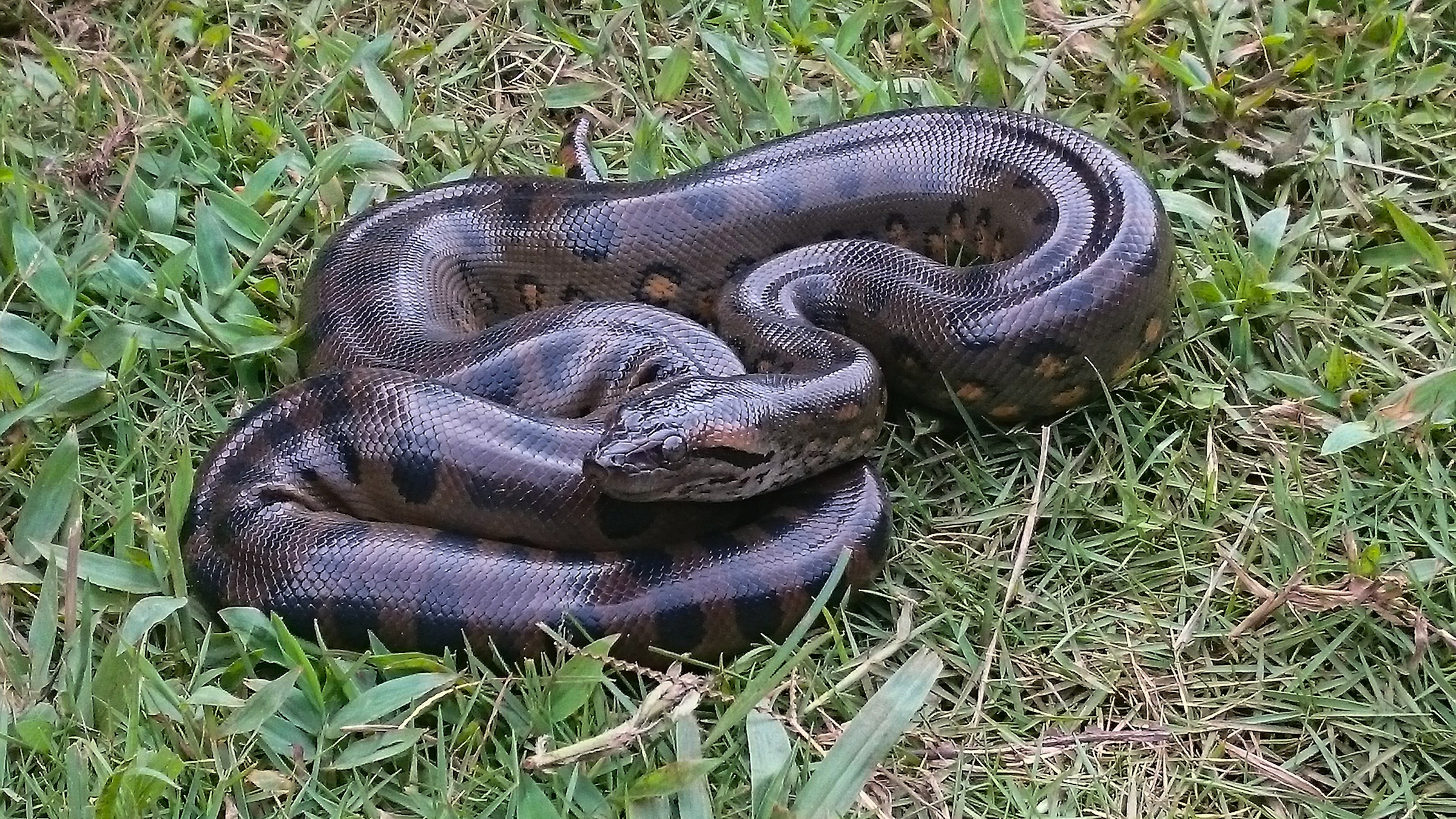Infant twins buried together in Roman Croatia may have died from lead poisoning
Around 2,000 years ago, fraternal twin infants were buried facing each other in a cemetery. But it's still unknown why they died.

Nearly 2,000 years ago, fraternal twin infants — one boy and one girl — were buried facing each other in a cemetery in what is now Croatia, a new study finds.
It's unclear why the twins died, but lead poisoning may have played a role, the researchers wrote in a study published in the April issue of the Journal of Archaeological Science: Reports.
"It is one of the very few double burials known in Croatia and is the only double burial of very young individuals in this cemetery," study first author Anna Osterholtz, a bioarchaeologist at Mississippi State University, told Live Science in an email.
The burial ground, known as Dragulin cemetery, was initially excavated in 2016, when construction for a parking lot revealed a handful of ancient stone urns, the researchers wrote in the study. The cemetery is in the modern city of Trogir (Tragurium in Roman times), a UNESCO World Heritage site. This area became a part of the Roman province of Illyricum after Julius Caesar's civil war in 47 B.C.
An investigation into the "short life and death of these siblings" revealed that they were buried sometime between the end of the first and the late second century A.D., the researchers wrote in the study.
Related: 31,000-year-old burial holds world's oldest known identical twins
An ancient DNA (aDNA) analysis showed that the infants were fraternal twins who were either stillborn or died within two months of their birth.
Get the world’s most fascinating discoveries delivered straight to your inbox.
"The burial posture of both twins suggests that they were important to their family and buried with significant care," Osterholtz said. "This is the first case of fraternal twins from the Roman period in Croatia that has been confirmed via aDNA analysis."
Why did the twins die?
Both individuals showed signs of chronic metabolic disease, or diseases caused by nutritional deficiency (like scurvy or rickets) or the body's inability to utilize nutrients.
Given the twins' young age at death, their nutrition would have come entirely from their mother, either through the placenta in the womb or breast milk after birth. So, it's possible that their metabolic diseases reflected their mother's poor health — meaning she was either malnourished or suffered from a metabolic disease herself.
Another idea is that the twins died from lead poisoning. Lead was pervasive in the Roman world; it was used in pipes and cookware. A lead compound was even used as a sweetener in wine and as a preservative for fruits. The twins' skeletal conditions are consistent with the effects of lead exposure, such as increased bone porosity and periosteal reactions, or new bone formation that happens when bones weakened from lead poisoning are fractured, the researchers wrote in the study. Chronic lead exposure can disrupt metabolic processes like hemoglobin synthesis, sperm production and neural function, and it can also hinder nutrient absorption, which could manifest in both the mother and the developing infants.
"Lead exposure through breast milk is a known cause of elevated infant blood lead levels," Amy Pyle-Eilola, an assistant professor of pathology at Nationwide Children's Hospital in Columbus, Ohio, who was not involved in the study, told Live Science in an email. "Additionally, there is a known correlation between elevated blood lead and metabolic bone disease in children."
Although the authors did not test the twins' remains for lead, they highlighted several cases of metabolic disorders in Roman-era children with high levels of lead in their teeth whose remains were found near Tragurium.
"So, if the mother had a significant lead exposure, which is a realistic possibility based on studies examining the same general time and location, it is absolutely possible that the lead was passed to the twins during pregnancy and/or via breastmilk, and the resulting elevation in lead could cause the observed bone disease," Pyle-Eilola added.
However, it's hard to know why the twins' health was so poor; there are many other nutritional, genetic and developmental issues that could account for the metabolic bone disease described in this study, Pyle-Eilola said.

Soumya Sagar holds a degree in medicine and used to do research in neurosurgery at the University of California, San Francisco. His work has appeared in New Scientist, Science, Discover, and Mental Floss. He is a passionate science writer and a voracious consumer of knowledge, especially trivia. He enjoys writing about medicine, animals, archaeology, climate change, and history. Animals have a special place in his heart. He also loves quizzing, visiting historical sites, reading Victorian literature and watching noir movies.
You must confirm your public display name before commenting
Please logout and then login again, you will then be prompted to enter your display name.
